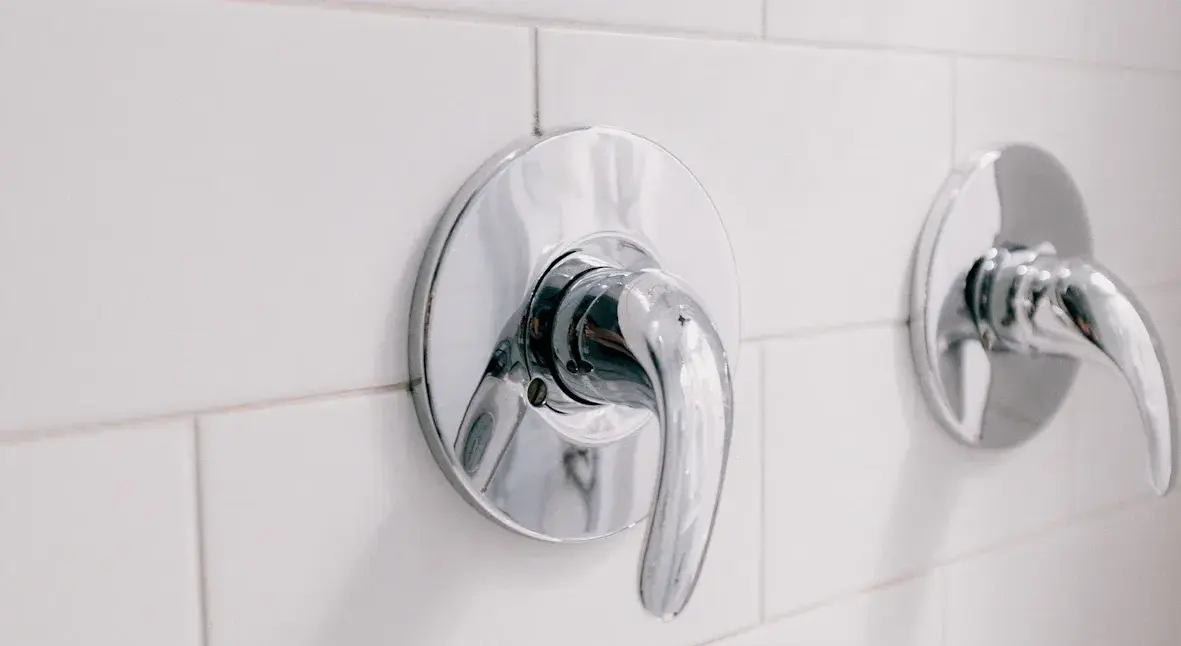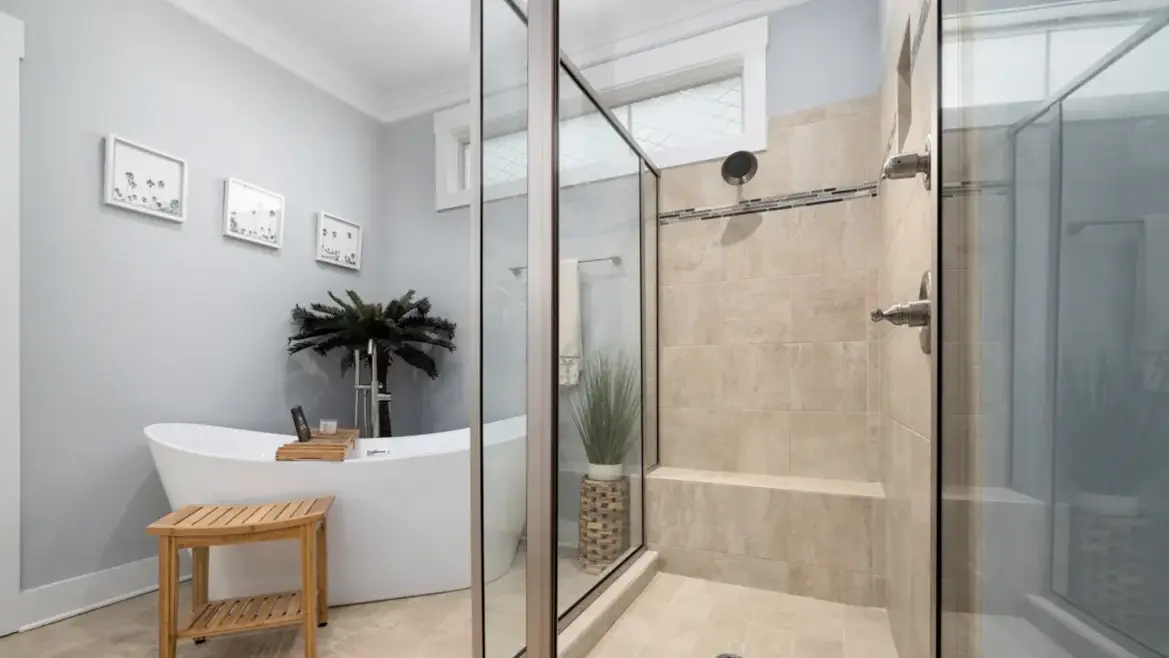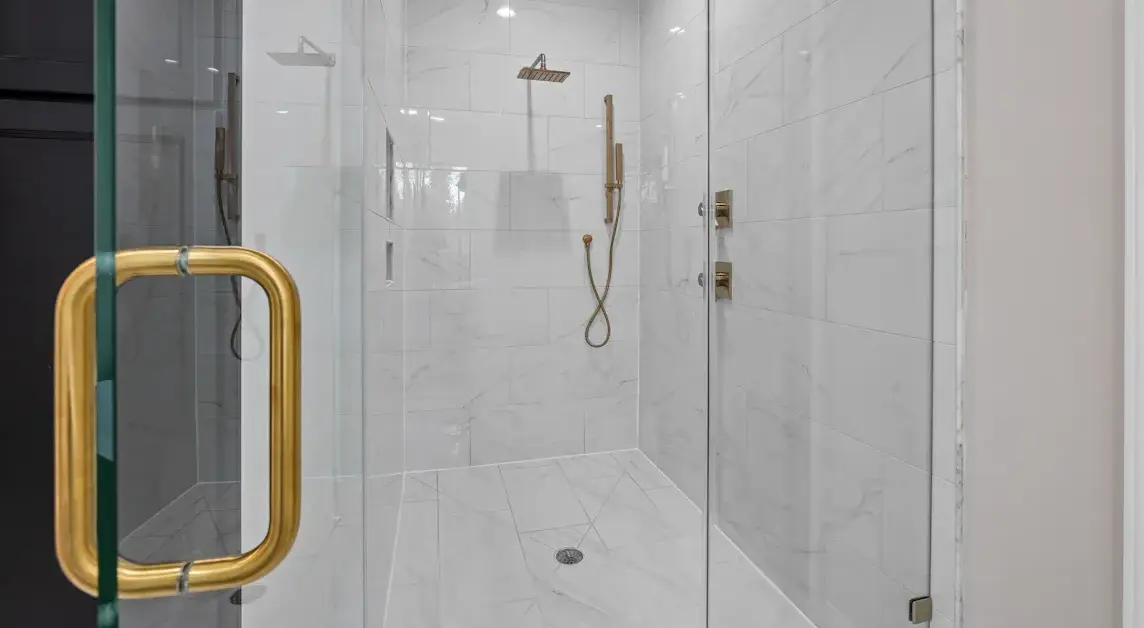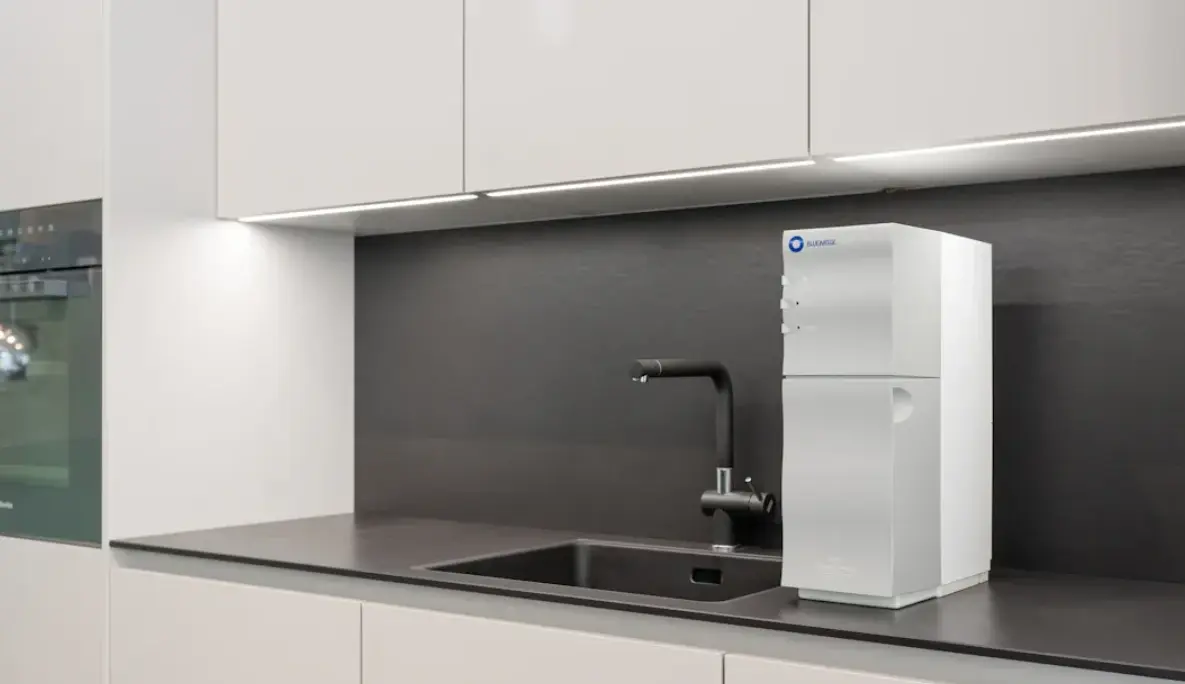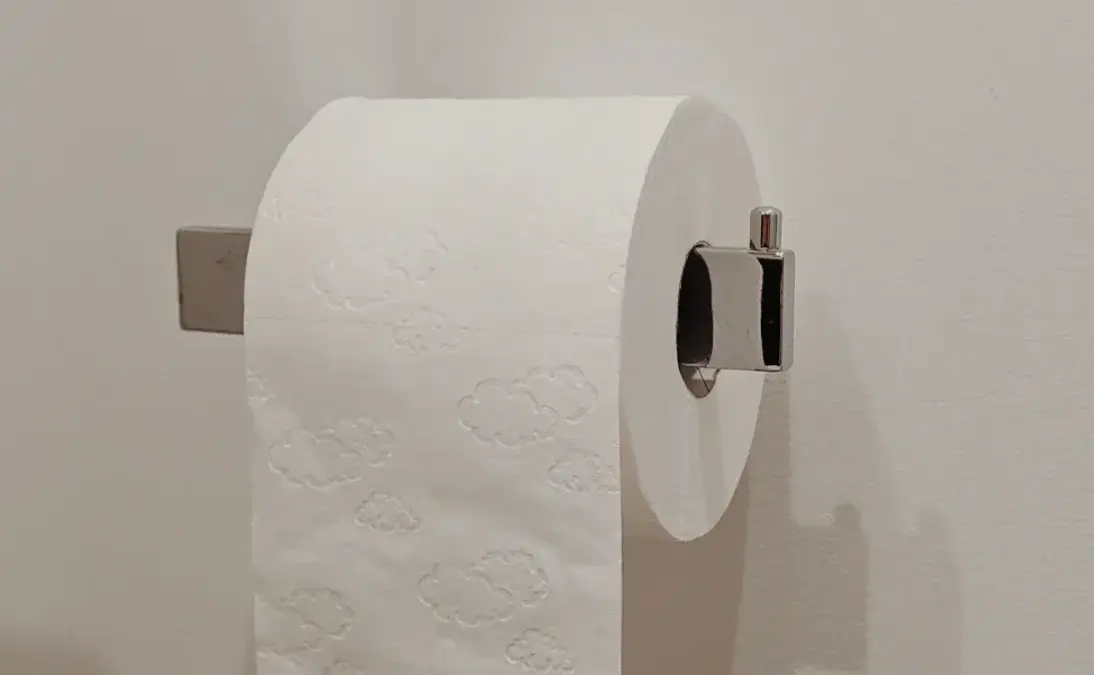How to Choose Different Shower Handles for Your Bathroom in 2025

Selecting the appropriate shower handlesignificantly influences a bathroom's daily functionality. Many distinct types of Shower Handles are available, each presenting unique operational benefits and design elements. Homeowners must carefully consider both the visual appeal and the practical requirements of their space. This decision extends beyond the primary water control, encompassing specialized hardware such asSliding Glass Door Knob Shower Knob Hardware. An informed choice ensures optimal performance and perfectly complements the bathroom's overall aesthetic.
Key Takeaways
- Choose a Shower Handle that fits your bathroom's look and your daily needs.
- Single-handle showers are easy to use, while dual-handle showers offer more control.
- Thermostatic and pressure-balanced handles keep water temperature steady and safe.
- Diverter handles let you switch water between different shower parts, like a showerhead or sprayer.
- Consider how easy the handle is to use for everyone, especially if someone has trouble gripping.
- Match the handle's material and finish to your bathroom's style and how long you want it to last.
- Understand your home's plumbing before buying a new handle to avoid problems.
- Smart Shower Handles offer cool features like voice control and saving water.
Understanding Different Shower Handle Types
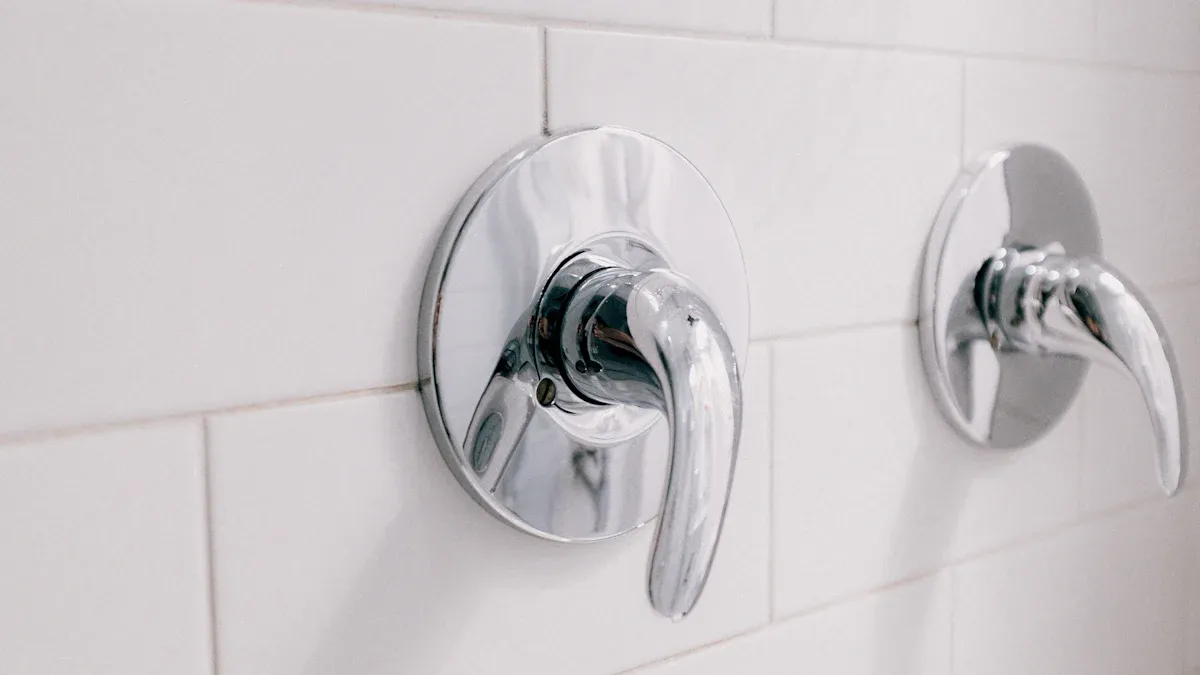
Single-Handle Shower Handles
Operation and Design of Single-Handle Shower Handles
Single-handle shower handles provide a streamlined approach to water control. Users operate a single lever or knob to manage both water temperature and flow. Pushing or pulling the handle typically controls the water volume. Rotating it left or right adjusts the temperature from cold to hot. This design offers a clean, minimalist aesthetic, often favored in modern bathroom designs.
Advantages and Disadvantages of Single-Handle Shower Handles
The primary advantage of single-handle Shower Handles is their ease of use. One hand can quickly adjust both flow and temperature. This convenience makes them a popular choice. However, achieving a precise temperature can sometimes require more fine-tuning compared to dual-handle systems. Installing a new shower valve typically costsbetween $225 and $750. This price covers removing the old valve, installing the new one, reconnecting water lines, and pressure testing. Upgrading to a single-handle setup, especially from a three-handle system, can increase costs due to extra labor and potential wall modifications. For instance, installing a 1-handle shower head and faucet can start from $633 to $1,014. This estimate includes basic labor, assembly, and testing, but excludes major structural changes or surface restoration.
Dual-Handle Shower Handles
Separate Controls for Hot and Cold Shower Handles
Dual-handle Shower Handles feature two distinct controls. One handle manages the hot water flow, and the other controls the cold water flow. Users mix the hot and cold water manually to achieve their desired temperature. This system provides direct control over each water supply.
Classic Aesthetics and Functionality of Dual-Handle Shower Handles
Dual-handle designs often evoke a classic or traditional aesthetic. They complement vintage or ornate bathroom styles. The separate controls allow for very precise adjustments of hot and cold water. This precision can be beneficial for users who prefer exact temperature settings. However, it may take slightly longer to find the perfect temperature compared to a single-handle system.
Thermostatic Shower Handles
Maintaining Consistent Water Temperature with Thermostatic Shower Handles
Thermostatic Shower Handles represent advanced temperature control technology. They maintain a consistent water temperature regardless of pressure fluctuations in the hot or cold water lines. An internal thermostatic valve automatically blends hot and cold water. This ensures the water temperature remains stable even when other water sources in the house are in use.
Safety Features and Comfort of Thermostatic Shower Handles
Thermostatic Shower Handles offer significant safety features. They prevent scalding by maintaining a consistent water temperature. Industry standards, such as ASSE 1016-2005 and CSA B125.1, govern these valves. These standards require adjustable handle position stops, set to a maximum of 120°F. This maximum temperature aligns with industry codes, which establish120°F as the safe limit for showering and bathing. For bathtubs without showers, ASSE 1070-2004 provides more stringent controls, requiring a minimum test flow of 0.5 gallons per minute. This technology enhances comfort by eliminating sudden temperature changes during a shower.
Pressure-Balanced Shower Handles
Preventing Temperature Fluctuations with Pressure-Balanced Shower Handles
Pressure-balanced Shower Handles prevent sudden temperature changes. They protect users from unexpected blasts of hot or cold water. This often happens when someone flushes a toilet or turns on a faucet elsewhere in the house. These handles maintain a consistent water temperature. They ensure a more comfortable and safer showering experience.
How Pressure-Balanced Shower Handles Work
A pressure-balanced valve contains a special diaphragm or piston. This component reacts to changes in water pressure. If the cold water pressure drops, the valve automatically reduces the hot water flow. This keeps the water temperature stable. Conversely, if hot water pressure decreases, the valve adjusts the cold water flow. This mechanism ensures a balanced mix of hot and cold water. It delivers a steady temperature to the showerhead.
Diverter Shower Handles
Managing Multiple Shower Functions with Diverter Shower Handles
Diverter Shower Handles direct water flow to different shower components. They allow users to switch between a main showerhead, a handheld sprayer, or a tub spout. This functionality creates a versatile showering system. It enhances the overall bathroom experience.
Types of Diverter Shower Handles
Several types of diverter systems exist for multi-function showers.
- Two-Way Diverter: This dedicated valve redirects water between two outlets. It commonly switches flow between a fixed showerhead and a handheld sprayer. It can also direct water between a traditional showerhead and a ceiling-mounted rain shower. Only one fixture operates at a time.
- Three-Way Diverter: This valve features one inlet and three outlets. Users select between three individual fixtures. Examples include a wall-mounted showerhead, a handheld sprayer, and a tub spout. It may also include an 'off' position. Some models allow for preset flow combinations.
- Six-Way Diverter: This diverter supports advanced multi-function systems. It offers three outlets with six settings. Users can run each outlet independently. They can also combine two outlets (e.g., A only, B only, C only, A+B, A+C, B+C). It has one water inlet and three outlet ports.
- Exterior Diverters: Some handheld shower systems include a built-in diverter. This eliminates the need for a separate valve and trim. It simplifies installation.
- Traditional 3-Handle Shower: Older systems often used the center handle as a diverter. This handle directed water to either the tub or the shower. Users adjusted hot and cold taps first.
Push-Button and Lever Shower Handles
Ergonomics and Ease of Use for Push-Button and Lever Shower Handles
Push-button and lever Shower Handles prioritize user comfort and accessibility. They offer superior ergonomics.Handheld showers with a pause button are ideal for seniors. They benefit individuals with limited grip or energy. Users find an on/off or pause switch directly on the handle particularly useful for seated use. These models feature easy-to-use controls. Pause buttons allow users to conserve water while lathering. They eliminate the need to repeatedly turn the faucet on and off. Showerheads should have easily distinguishable and manipulable controls. Large buttons or levers are preferable for users with minimal dexterity or strength.
Modern and Accessible Options for Shower Handles
These handle types represent modern and accessible design choices. Their intuitive operation makes them suitable for all users. They often meet ADA compliance standards. This ensures universal design in the bathroom. Their sleek appearance also complements contemporary bathroom aesthetics. This makes them a practical and stylish choice for many homes. A well-chosen Shower Handle enhances both functionality and design.
Key Factors for Selecting Your Shower Handle
Choosing the right shower handle involves more than just personal preference. Several critical factors influence the decision. These factors ensure the handle functions effectively, integrates seamlessly with the bathroom's design, and provides long-lasting performance. Homeowners must consider aesthetics, material quality, user accessibility, and budget.
Bathroom Style and Aesthetic Integration for Your Shower Handle
Matching Your Shower Handle with Existing Decor
The shower handle plays a significant role in the bathroom's overall visual harmony. It should complement existing fixtures, such as faucets, towel bars, and lighting. Consider the style of your vanity, tiling, and color palette. A cohesive design creates a polished and inviting space. Mismatched elements can disrupt the bathroom's aesthetic flow.
Contemporary vs. Traditional Shower Handle Styles
Shower handles come in a wide array of styles. Contemporary designs often feature clean lines, minimalist forms, and geometric shapes. They suit modern, sleek bathrooms. Traditional styles, conversely, showcase more ornate details, classic curves, and decorative elements. These handles enhance vintage or classic bathroom aesthetics. Selecting a style that aligns with your bathroom's theme ensures a unified look.
Material and Finish Durability of Your Shower Handle
Common Materials for Shower Handles: Brass, Stainless Steel, Zinc Alloy
The material of a shower handle directly impacts its durability and longevity. Different materials offer varying levels of resistance to corrosion and wear.
| Material | Durability Advantages | Durability Disadvantages |
|---|---|---|
| Brass | Excellent resistance to rust and corrosion | Softer metal, may dent or wear over time; can tarnish |
| Zinc Alloy | Cost-effective | Less corrosion-resistant; shorter lifespan |
Brass handles offer excellent resistance to rust and corrosion, making them a durable choice for wet environments. Stainless steel provides robust strength and also resists corrosion effectively. Zinc alloy offers a cost-effective option, but it typically has a shorter lifespan and less corrosion resistance compared to brass or stainless steel.
Popular Finishes for Shower Handles: Chrome, Brushed Nickel, Matte Black, Bronze
The finish of a shower handle protects the underlying material and contributes significantly to its appearance.
- Chrome: This finish is highly popular. It offers a bright, reflective surface that is easy to clean and complements many styles.
- Brushed Nickel: Brushed nickel provides a softer, muted look. It resists fingerprints and water spots well, making it a practical choice.
- Matte Black: Matte black offers a bold, modern statement. It creates a striking contrast in lighter bathrooms and pairs well with industrial designs.
- Bronze: Bronze finishes, often oil-rubbed, provide a warm, antique appearance. They suit traditional or rustic bathroom themes.
Each finish requires specific cleaning methods to maintain its appearance and durability.
Ergonomics and Accessibility of Shower Handles
Ease of Operation for All Users with Different Shower Handles
A well-designed shower handle prioritizes ease of use for everyone. Lever handles generally offer easier operation than traditional knobs. Users with limited dexterity or strength find levers simpler to grasp and turn. Consider the force required to operate the handle. Smooth, fluid movements enhance the showering experience for all users, including children and the elderly.
ADA Compliance and Universal Design for Shower Handles
Adhering to ADA (Americans with Disabilities Act) compliance ensures a bathroom is accessible to individuals with disabilities. Universal design principles aim to make products usable by all people, to the greatest extent possible, without the need for adaptation. For shower controls, specific guidelines apply:
- Shower valve height must be between 38 and 48 inches from the floor.
- Valves can be installed on the back wall or either sidewall.
- In a 3x3 foot shower, controls should be on the wall opposite the seat.
- Operation must be one-handed, without pinching or binding, and require no more than 5 pounds of force.
- Shower controls (faucet, spray unit) must be between 38 and 48 inches from the shower floor.
- Controls should be installed on the sidewall opposite the shower seat.
- Controls must be located above the grab bar, but no higher than 48 inches from the shower floor.
- Controls must be installed on the back wall adjacent to the shower seat and within 27 inches of the seat wall.
Choosing an ADA-compliant shower handle ensures accessibility and promotes a more inclusive bathroom environment.
Plumbing Compatibility for Your New Shower Handle
Understanding Your Existing Plumbing System for Shower Handles
Homeowners must understand their current plumbing system before selecting a new shower handle. Different shower handles require specific valve types and rough-in configurations. Ignoring this step can lead to costly installation issues or incompatibility. Examine the existing setup. Determine if the current valve is a single-piece unit or if it has separate hot and cold lines. This initial assessment guides the selection process.
Valve Types and Rough-In Requirements for Shower Handles
The type of valve behind the wall dictates which shower handle models will work. Several common valve types exist in residential plumbing systems.
- Pressure Balancing Valve: This common valve automatically adjusts hot and cold water pressure. It maintains a steady temperature, typically within 2-3 degrees. Manufacturers often pair it with single-handle faucets. It stands as an industry standard and offers an affordable option. People also call it an anti-scald, shower pressure, or mechanical valve.
- Thermostatic Valve: This type features two valves and two handles. It allows independent control of water temperature and volume. A thermosensitive element senses and maintains the desired temperature within one degree. It offers superior scalding protection. This valve type is more advanced and represents the most expensive option.
- Shower Mixing Valve: This older valve type mixes hot and cold water from separate taps. It often appears in older homes. It poses a scalding risk if cold water pressure drops suddenly. It does not regulate pressure fluctuations. New constructions no longer permit its use.
- Shower Diverter Valves: These valves typically direct water flow between a showerhead and a tub spout in tub-shower combinations.
Rough-in requirements refer to the necessary space and connections behind the wall for the valve. Each valve type has specific dimensions and connection points. Ensure the chosen shower handle and its corresponding valve fit within the existing wall cavity. This prevents extensive and expensive wall modifications.
Budget and Value Proposition for Shower Handles
Balancing Cost with Quality and Features of Shower Handles
The cost of a shower handle varies significantly. Prices range from basic, inexpensive models to high-end, feature-rich options. Homeowners balance their budget with desired quality and features. Higher-priced handles often feature superior materials, advanced technology, and enhanced durability. Less expensive options may offer basic functionality but might not last as long. Consider the long-term performance and maintenance needs. A more robust handle can prevent future repair costs.
Long-Term Investment vs. Upfront Expense for Shower Handles
Consider a shower handle purchase as an investment in the bathroom's functionality and value. A higher upfront expense for a quality handle often translates into a better long-term investment. These handles typically offer greater reliability, better performance, and a longer lifespan. They resist wear and corrosion more effectively. Cheaper alternatives might save money initially. However, they may require frequent replacements or repairs. This increases overall costs over time. Investing in a durable, well-designed handle enhances the daily showering experience. It also contributes to the home's overall appeal and value.
Advanced Features and Smart Options for Shower Handles in 2025
Modern technology transforms the bathroom experience. Shower handles now offer advanced features and smart options. These innovations enhance convenience, promote sustainability, and improve safety. Homeowners can expect more sophisticated controls and integrated functionalities in 2025.
Touchless and Smart Shower Handle Controls
Voice Activation and App Control for Smart Shower Handles
Smart shower systems bring unparalleled convenience. Users can now control their showers with voice commands. They integrate with smart home assistants like Alexa or Google Assistant. This allows starting the shower, adjusting temperature, or pausing water flow hands-free. Smartphone applications also provide remote control. Users can pre-heat the shower before stepping in. They can also monitor water usage through these apps.
Pre-set Temperature and Flow Settings for Smart Shower Handles
Smart shower handles offer personalized experiences. They allow users to save preferred temperature and flow settings. Different family members can have their own profiles. A quick tap or voice command activates their ideal shower. This eliminates the need for manual adjustments every time. It ensures a consistent and comfortable experience for everyone.
Water-Saving and Eco-Friendly Shower Handles
Low-Flow Shower Handle Options
Environmental consciousness drives innovation in shower technology. Low-flow shower handles reduce water consumption significantly. They use advanced aeration or laminar flow technologies. These methods maintain strong water pressure despite lower flow rates. Users enjoy an invigorating shower while conserving a precious resource.
WaterSense Certification for Shower Handles
The Environmental Protection Agency (EPA) developed the WaterSense program. It identifies water-efficient products. WaterSense certified showerheads meet strict performance and efficiency criteria. An average family can save 2,900 gallons of water annually by installing WaterSense labeled showerheads. Replacing just one inefficient showerhead with a WaterSense labeled one saves approximately 2,700 to 2,900 gallons of water each year. This certification assures consumers of both water savings and satisfactory performance.
Integrated Lighting and Digital Displays in Shower Handles
Aesthetic Enhancements with Lighted Shower Handles
Integrated lighting adds a luxurious touch to the shower. LED lights can illuminate the water stream. They create a spa-like ambiance. Some systems use color-changing lights to indicate water temperature. Blue might signify cold water, while red indicates hot. This feature enhances both aesthetics and safety.
Temperature Readouts and Timers on Digital Shower Handles
Digital displays provide precise information. They show the exact water temperature in real-time. This eliminates guesswork and prevents scalding. Some displays also include timers. Users can monitor their shower duration. This helps conserve water and manage time efficiently. These digital features offer a modern and functional upgrade to any bathroom.
Anti-Scald Technology in Shower Handles
Enhanced Safety Features in Shower Handles
Anti-scald technology significantly enhances safety in modern bathrooms. This technology maintains a consistent water temperature. It prevents accidental burns, integrating into shower systems for enhanced safety. Digital shower controls provide precise temperature and flow settings. Users program their ideal shower experience. They save preferred settings for different users. This eliminates the risk of sudden temperature spikes. It ensures a comfortable and secure showering environment for everyone.
Protecting Against Extreme Temperatures with Anti-Scald Shower Handles
Anti-scald technology protects users from extreme temperatures. It utilizes highly sensitive thermostatic elements. These elements include bimetallic strips and wax elements. They monitor and adjust water temperature up to 50 times per second. This maintains the temperature within ±0.5 degrees Celsius. Fail-safe mechanisms cut off water flow if the cold water supply fails. This prevents scalding.
Smart water management systems integrate flow rate optimization with pressure-balancing technology. They monitor water consumption. They provide real-time feedback. Eco-modes reduce water usage by up to 50% without compromising the shower experience. Pressure-balancing ensures consistent water delivery during peak usage. This prevents sudden temperature changes when other household water sources activate.
The evolution of technology transforms user expectations for concealed thermostatic shower valves. This includes smart controls, digital interfaces, and home automation integration. Manufacturers invest in research and development for precise temperature control, enhanced safety features, and energy savings. Regulatory frameworks also compel continuous innovation in these fixtures. Government mandates for anti-scald features and water efficiency drive these advancements. Customizable user experience platforms offer an intuitive digital interface. Users create and store multiple shower profiles. These profiles include customized temperature settings, flow rates, and spray patterns. Features like password protection, smartphone integration, and voice control compatibility further enhance safety and convenience.
Installation Considerations for Your Shower Handle

Installing a new shower handle can be a rewarding home improvement project. However, homeowners must carefully assess their capabilities and the project's complexity. This ensures a successful installation.
DIY Installation Feasibility for Shower Handles
Assessing Your Skill Level and Tools for Shower Handle Installation
Many homeowners consider installing a shower handle themselves. This task requires basic plumbing knowledge and the right tools. Individuals should feel comfortable working with plumbing components. They must also understand how to shut off water supplies. Essential tools for a standard DIY shower handle installation include:
- Hammer
- Screwdriver
- Pliers
- Wrench
- Level
- Tape measure
- Utility knife A flathead screwdriver helps pry off decorative caps. An adjustable wrench removes retaining nuts on cartridges. Possessing these tools and basic mechanical skills makes DIY installation possible.
Common Challenges in DIY Shower Handle Installation
DIY shower handle installation presents several common challenges. Homeowners often encounter seized or corroded parts. Removing old components can be difficult. Misaligning new parts can cause leaks. Incorrectly connecting water lines leads to improper function. Sometimes, the new handle's valve does not fit the existing rough-in. This requires unexpected wall modifications. These issues can quickly turn a simple project into a complex one.
When to Hire a Professional for Shower Handle Installation
Complex Plumbing Modifications for Shower Handles
Some shower handle installations demand professional expertise. This is especially true when the project involves complex plumbing modifications. Changing valve types often requires altering pipes behind the wall. Professionals possess the skills and specialized tools for these tasks. They ensure all connections are secure and leak-free. They also handle any necessary wall repairs.
Ensuring Proper Functionality and Warranty for Shower Handles
Hiring a professional plumber offers significant advantages. They ensure the shower handle functions correctly. Professionals understand plumbing codes. Plumbing codes, such as the National Plumbing Code and Uniform Plumbing Code, establish minimum standards for plumbing systems. These codes cover water supply, materials, pressure, flow rates, and temperature regulation. Professionals ensure compliance with these regulations. For example, 408.9 of the 2019 California Plumbing Code states:
"Control valves and showerheads shall be located on the sidewall of shower compartments or otherwise arranged so that the showerhead does not discharge directly at the entrance to the compartment so that the bather can adjust the valves before stepping into the shower spray." This ensures proper placement and safety. Professional installation also often preserves the product warranty. Many manufacturers require professional installation for warranty validity. This protects the homeowner's investment.
Maintaining Your Shower Handle for Longevity
Proper maintenance significantly extends a shower handle's lifespan. Regular cleaning and prompt issue resolution prevent costly repairs. Homeowners protect their investment and ensure consistent performance through diligent care.
Cleaning and Upkeep Tips for Shower Handles
Recommended Cleaning Products for Different Shower Handle Finishes
Different finishes require specific cleaning agents to prevent damage. Chrome handles, for instance, benefit from gentle solutions.
- Equal parts water and vinegar: Apply this solution to chrome surfaces. Wipe it away with a soft sponge or microfiber cloth.
- Soap and water: Combine warm water and dish soap. Dip a soft sponge or cloth into the mixture. Wipe the chrome surface, then rinse and dry.
- Lemons or lemon juice: Rub a lemon half over the chrome surface. Rinse with water and dry.
- Baking soda paste: Mix three parts baking soda to one part water. Apply the paste, gently scrub, rinse, and allow it to dry.
- Bar Keepers Friend Soft Cleanser Liquid: This non-toxic cleanser effectively removes soap scum, mineral deposits, and water spots.
Routine Maintenance to Extend Shower Handle Lifespan
Regular cleaning prevents mineral buildup and soap scum accumulation. Wipe down handles after each use to remove water spots. Use soft cloths to avoid scratching finishes. Periodically check for loose screws or connections. Tightening these components prevents wear and tear. This proactive approach keeps the shower handle looking new and functioning smoothly.
Troubleshooting Common Shower Handle Issues
Addressing Leaks in Shower Handles
Leaks are a common problem. They often indicate worn internal components. Single-handle shower leaks frequently stem from several issues:
- Worn Out Washers: Small rubber stoppers seal water flow. Friction and pressure wear them down over time. This leads to drips from the spout when the faucet is off.
- Loose Parts: Nuts and screws can loosen. This causes vibrations, wear, and misalignment of components. It compromises seals and results in leaks.
- Corroded Pipes: Corrosion creates weak spots in pipes. Water seeps out, often unnoticed until a visible leak or drop in water quality occurs.
- High Water Pressure: Excessive water pressure damages plumbing fixtures. It widens small openings in the faucet and causes leaks.
- Faulty Seals: Seals in handles, spouts, and cartridges deteriorate over time. Water exposure and cleaning products compromise their integrity, leading to leaks.
Addressing these issues promptly prevents further damage and water waste.
Resolving Stiff or Loose Shower Handles
A stiff or loose handle indicates internal issues. Resolving these problems often involves disassembling the handle and cleaning or replacing parts. For a stiff handle, follow these steps:
- Shut off the water supply to the shower.
- Cover the drain with a rag to prevent losing screws.
- Locate and remove the set screw holding the handle. It might hide under a plastic plate or on the underside.
- Remove the handle. It may slide off, need prying due to corrosion, or require unscrewing with a wrench. A faucet handle puller helps with stubborn handles.
- Remove screws from the trim plate and slide off the metal sleeve.
- Clean any corrosion or gunk from the parts using a toothbrush.
- If applicable, remove old thread tape and apply new thread sealant tape to threaded faucet stems.
- Reinstall the trim plate(s).
- Attach the new handle: slide it onto the stem valve or screw it onto the taped stems.
- Insert and tighten the set screw to secure the handle.
- Restore water supply and test the handle.
A loose handle often requires tightening the set screw or replacing a worn cartridge. These simple repairs restore proper handle function.
Choosing a shower handle requires careful consideration. Homeowners must balance functionality, aesthetics, and practical factors. These elements include material, accessibility, and plumbing compatibility. An informed decision is crucial for lasting satisfaction. The right handle enhances the daily showering experience. It also contributes significantly to the bathroom's overall appeal. Select a handle that truly elevates your bathroom environment.
FAQ
What is the primary difference between single-handle and dual-handle shower handles?
Single-handle shower handles control both temperature and flow with one lever. Dual-handle models use separate controls for hot and cold water. Single-handle designs offer simplicity. Dual-handle designs provide precise temperature mixing.
Why should homeowners consider a thermostatic shower handle?
Thermostatic shower handles maintain a consistent water temperature. They prevent sudden hot or cold blasts. This enhances safety and comfort during showering. They automatically adjust to pressure changes in water lines.
What does "ADA compliant" mean for shower handles?
ADA compliant shower handles meet specific accessibility standards. They ensure ease of use for individuals with disabilities. These handles often feature lever designs. They require minimal force to operate. This promotes universal design in bathrooms.
Can I install a smart shower handle myself?
DIY installation of smart shower handles depends on your plumbing skills. Basic replacements might be feasible. However, smart systems often require electrical connections and complex valve setups. Professionals ensure proper functionality and warranty validity.
How do I clean my shower handle effectively without causing damage?
Clean shower handles with mild soap and water. Use a soft cloth. Avoid abrasive cleaners or harsh chemicals. These can damage the finish. For chrome, a vinegar and water solution works well. Always dry the handle after cleaning.
What are the benefits of choosing a water-saving shower handle?
Water-saving shower handles reduce water consumption. They lower utility bills. These handles often feature low-flow technology. They maintain strong water pressure. WaterSense certified models ensure both efficiency and performance.
When should I hire a professional for shower handle installation?
Hire a professional for complex plumbing modifications. This includes changing valve types. Professionals ensure correct installation and compliance with plumbing codes. They also help maintain product warranties. This prevents potential leaks or malfunctions.


